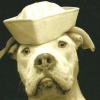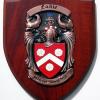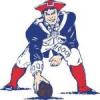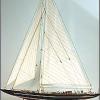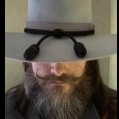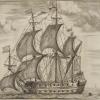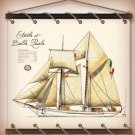-
Posts
2,390 -
Joined
-
Last visited
Reputation Activity
-
 usedtosail got a reaction from Starboard III in USS Constitution by usedtosail - FINISHED - Model Shipways - scale 1/76
usedtosail got a reaction from Starboard III in USS Constitution by usedtosail - FINISHED - Model Shipways - scale 1/76
You got it Captain. Take all you want. I'm flattered.
-
 usedtosail got a reaction from GLakie in USS Constitution by usedtosail - FINISHED - Model Shipways - scale 1/76
usedtosail got a reaction from GLakie in USS Constitution by usedtosail - FINISHED - Model Shipways - scale 1/76
Tim, I don't mind at all. That is what I love about this site. A year ago I would have had no idea how to tackle something like this.
-
 usedtosail got a reaction from popeye the sailor in USS Constitution by usedtosail - FINISHED - Model Shipways - scale 1/76
usedtosail got a reaction from popeye the sailor in USS Constitution by usedtosail - FINISHED - Model Shipways - scale 1/76
Well, here are the results. I planked a few sections of the inner bulwarks with the riveted planks. I still need to trim the ends to be flush with the gun ports. Not as precise as I have seen other modellers create these rivets, but I think the overall effect is what I was after. It will be a while before they are painted, so I am curious to see what they will look like then.
-
 usedtosail got a reaction from SkerryAmp in USS Constitution by usedtosail - FINISHED - Model Shipways - scale 1/76
usedtosail got a reaction from SkerryAmp in USS Constitution by usedtosail - FINISHED - Model Shipways - scale 1/76
Well, here are the results. I planked a few sections of the inner bulwarks with the riveted planks. I still need to trim the ends to be flush with the gun ports. Not as precise as I have seen other modellers create these rivets, but I think the overall effect is what I was after. It will be a while before they are painted, so I am curious to see what they will look like then.
-
 usedtosail got a reaction from popeye the sailor in USS Constitution by usedtosail - FINISHED - Model Shipways - scale 1/76
usedtosail got a reaction from popeye the sailor in USS Constitution by usedtosail - FINISHED - Model Shipways - scale 1/76
Thanks all. After a fine Thanksgiving break I am back to work. I am excited to have the hull planking finished, at least for now. I did some more work on the wales to get them as smooth as the rest of the hull, so here it is after a medium and fine sanding of the whole hull.
Scott - I hope I didn't make it too smooth. I know when I prime it, I will find that I have more blemishes to fill and sand out.
Now it is on to more interesting work. Planking the inside bulwarks is the next task, with all those rivets to show. My original thought was to try using small drops of CA glue to simulate the rivets, like I have done on pintels and gudgeons in the past. This works fine on metal, but on wood the CA just soaked into the wood. OK, I thought, how about if I put some wipe on poly on the wood first. This slowed the soaking down, but eventually I had the same result. Time to come up with a new method.
I had seen other builds where they bought individual rivets from a model railroad company, but when I priced these out they seemed a bit expensive. So, I came up with my own way to make rivets. I drilled some holes in a strip of wood, dipped the end of a wire into CA, then pushed it into the hole. I cut the wire off and repeated in the next hole. The wire was sticking up a bit, so I trimmed it flusher to the wood, then used a ball peen hammer to gently tap the ends down, which also mushroomed the wire just enough. I was happy with the look and the process wasn't too bad, so I made up a jig to help. Here is the story in pictures:
First, here are the tools I used for this. That cutter does a good job but does not cut the wire completely flush, which worked out to be a good thing. You can see the jig I made up, which is just two strips of wood with offset markings to show where to drill the holes for the rivets. I am drilling two rows per strip, offset by half the distance between rivets, which is the pattern on the current ship. I am not yet sure if I can fit two rivets at the end of each strip, but I may try that. Most of the strips go between the gun ports, so they will be short.
Here I have a planking strip in the jig and am drilling the holes. On my first attempt, I glued the wire into the holes with the strip still on the jig, but when I pulled the strip off a few of the wires stayed glued into the jig. I now drill the holes then take the strip out of the jig before gluing in the wires.
I dip the end of the wire in a small puddle of medium CA. You can see my patented CA glue holder using small cups from my daughters contact lenses. I have a lifetime supply of these.
Then I push the wire into a hole and cut it off with the cutters.
I can get into a pretty good rhythm this way. After I fill a bunch of holes, I go back and trim the wires again to get them closer to the wood and here is how they look at this stage.
I then use the file shown to gently file them down a little bit more and brighten the ends.
At first I was going to use them like this, but after sleeping on it, I decided they were too sharp and still too high, so the next day I found this ball peen hammer and tried tapping them to see if they would flatten out a bit. I used this jewelers block that I had to keep the wires from pushing through the back of the strip.
And here you can see the final result on the right, the wires on the left have not been tapped down yet.
I was a bit worried that the tapping would flatten the wood out too much, but you can see from the side that the wood is still in pretty good shape. I will cut out a few strips and see how they look on the bulwarks tonight, but I think they will look good. Its a bit of work but not too bad, relative to all the other work that still needs to be done. This is such a prominent detail that I don't mind taking the time to make these strips.
I don't yet know how to handle the curved planks at the bow. I think I will have to bend them to shape before adding the rivets, then add the rivets before gluing them to the bow. I think trying to bend the plank with all those holes would just break it.
I am also in the process of designing a cradle for the model but that is a story for another day. I did measure the contour of the hull in the two places that the cradle will support, since this seemed like a good time for that before I start coppering the hull.
-
 usedtosail got a reaction from SkerryAmp in USS Constitution by usedtosail - FINISHED - Model Shipways - scale 1/76
usedtosail got a reaction from SkerryAmp in USS Constitution by usedtosail - FINISHED - Model Shipways - scale 1/76
Thanks all. After a fine Thanksgiving break I am back to work. I am excited to have the hull planking finished, at least for now. I did some more work on the wales to get them as smooth as the rest of the hull, so here it is after a medium and fine sanding of the whole hull.
Scott - I hope I didn't make it too smooth. I know when I prime it, I will find that I have more blemishes to fill and sand out.
Now it is on to more interesting work. Planking the inside bulwarks is the next task, with all those rivets to show. My original thought was to try using small drops of CA glue to simulate the rivets, like I have done on pintels and gudgeons in the past. This works fine on metal, but on wood the CA just soaked into the wood. OK, I thought, how about if I put some wipe on poly on the wood first. This slowed the soaking down, but eventually I had the same result. Time to come up with a new method.
I had seen other builds where they bought individual rivets from a model railroad company, but when I priced these out they seemed a bit expensive. So, I came up with my own way to make rivets. I drilled some holes in a strip of wood, dipped the end of a wire into CA, then pushed it into the hole. I cut the wire off and repeated in the next hole. The wire was sticking up a bit, so I trimmed it flusher to the wood, then used a ball peen hammer to gently tap the ends down, which also mushroomed the wire just enough. I was happy with the look and the process wasn't too bad, so I made up a jig to help. Here is the story in pictures:
First, here are the tools I used for this. That cutter does a good job but does not cut the wire completely flush, which worked out to be a good thing. You can see the jig I made up, which is just two strips of wood with offset markings to show where to drill the holes for the rivets. I am drilling two rows per strip, offset by half the distance between rivets, which is the pattern on the current ship. I am not yet sure if I can fit two rivets at the end of each strip, but I may try that. Most of the strips go between the gun ports, so they will be short.
Here I have a planking strip in the jig and am drilling the holes. On my first attempt, I glued the wire into the holes with the strip still on the jig, but when I pulled the strip off a few of the wires stayed glued into the jig. I now drill the holes then take the strip out of the jig before gluing in the wires.
I dip the end of the wire in a small puddle of medium CA. You can see my patented CA glue holder using small cups from my daughters contact lenses. I have a lifetime supply of these.
Then I push the wire into a hole and cut it off with the cutters.
I can get into a pretty good rhythm this way. After I fill a bunch of holes, I go back and trim the wires again to get them closer to the wood and here is how they look at this stage.
I then use the file shown to gently file them down a little bit more and brighten the ends.
At first I was going to use them like this, but after sleeping on it, I decided they were too sharp and still too high, so the next day I found this ball peen hammer and tried tapping them to see if they would flatten out a bit. I used this jewelers block that I had to keep the wires from pushing through the back of the strip.
And here you can see the final result on the right, the wires on the left have not been tapped down yet.
I was a bit worried that the tapping would flatten the wood out too much, but you can see from the side that the wood is still in pretty good shape. I will cut out a few strips and see how they look on the bulwarks tonight, but I think they will look good. Its a bit of work but not too bad, relative to all the other work that still needs to be done. This is such a prominent detail that I don't mind taking the time to make these strips.
I don't yet know how to handle the curved planks at the bow. I think I will have to bend them to shape before adding the rivets, then add the rivets before gluing them to the bow. I think trying to bend the plank with all those holes would just break it.
I am also in the process of designing a cradle for the model but that is a story for another day. I did measure the contour of the hull in the two places that the cradle will support, since this seemed like a good time for that before I start coppering the hull.
-
 usedtosail got a reaction from jdbradford in USS Constitution by usedtosail - FINISHED - Model Shipways - scale 1/76
usedtosail got a reaction from jdbradford in USS Constitution by usedtosail - FINISHED - Model Shipways - scale 1/76
Thanks all. After a fine Thanksgiving break I am back to work. I am excited to have the hull planking finished, at least for now. I did some more work on the wales to get them as smooth as the rest of the hull, so here it is after a medium and fine sanding of the whole hull.
Scott - I hope I didn't make it too smooth. I know when I prime it, I will find that I have more blemishes to fill and sand out.
Now it is on to more interesting work. Planking the inside bulwarks is the next task, with all those rivets to show. My original thought was to try using small drops of CA glue to simulate the rivets, like I have done on pintels and gudgeons in the past. This works fine on metal, but on wood the CA just soaked into the wood. OK, I thought, how about if I put some wipe on poly on the wood first. This slowed the soaking down, but eventually I had the same result. Time to come up with a new method.
I had seen other builds where they bought individual rivets from a model railroad company, but when I priced these out they seemed a bit expensive. So, I came up with my own way to make rivets. I drilled some holes in a strip of wood, dipped the end of a wire into CA, then pushed it into the hole. I cut the wire off and repeated in the next hole. The wire was sticking up a bit, so I trimmed it flusher to the wood, then used a ball peen hammer to gently tap the ends down, which also mushroomed the wire just enough. I was happy with the look and the process wasn't too bad, so I made up a jig to help. Here is the story in pictures:
First, here are the tools I used for this. That cutter does a good job but does not cut the wire completely flush, which worked out to be a good thing. You can see the jig I made up, which is just two strips of wood with offset markings to show where to drill the holes for the rivets. I am drilling two rows per strip, offset by half the distance between rivets, which is the pattern on the current ship. I am not yet sure if I can fit two rivets at the end of each strip, but I may try that. Most of the strips go between the gun ports, so they will be short.
Here I have a planking strip in the jig and am drilling the holes. On my first attempt, I glued the wire into the holes with the strip still on the jig, but when I pulled the strip off a few of the wires stayed glued into the jig. I now drill the holes then take the strip out of the jig before gluing in the wires.
I dip the end of the wire in a small puddle of medium CA. You can see my patented CA glue holder using small cups from my daughters contact lenses. I have a lifetime supply of these.
Then I push the wire into a hole and cut it off with the cutters.
I can get into a pretty good rhythm this way. After I fill a bunch of holes, I go back and trim the wires again to get them closer to the wood and here is how they look at this stage.
I then use the file shown to gently file them down a little bit more and brighten the ends.
At first I was going to use them like this, but after sleeping on it, I decided they were too sharp and still too high, so the next day I found this ball peen hammer and tried tapping them to see if they would flatten out a bit. I used this jewelers block that I had to keep the wires from pushing through the back of the strip.
And here you can see the final result on the right, the wires on the left have not been tapped down yet.
I was a bit worried that the tapping would flatten the wood out too much, but you can see from the side that the wood is still in pretty good shape. I will cut out a few strips and see how they look on the bulwarks tonight, but I think they will look good. Its a bit of work but not too bad, relative to all the other work that still needs to be done. This is such a prominent detail that I don't mind taking the time to make these strips.
I don't yet know how to handle the curved planks at the bow. I think I will have to bend them to shape before adding the rivets, then add the rivets before gluing them to the bow. I think trying to bend the plank with all those holes would just break it.
I am also in the process of designing a cradle for the model but that is a story for another day. I did measure the contour of the hull in the two places that the cradle will support, since this seemed like a good time for that before I start coppering the hull.
-
 usedtosail got a reaction from JesseLee in USS Constitution by usedtosail - FINISHED - Model Shipways - scale 1/76
usedtosail got a reaction from JesseLee in USS Constitution by usedtosail - FINISHED - Model Shipways - scale 1/76
Thanks all. After a fine Thanksgiving break I am back to work. I am excited to have the hull planking finished, at least for now. I did some more work on the wales to get them as smooth as the rest of the hull, so here it is after a medium and fine sanding of the whole hull.
Scott - I hope I didn't make it too smooth. I know when I prime it, I will find that I have more blemishes to fill and sand out.
Now it is on to more interesting work. Planking the inside bulwarks is the next task, with all those rivets to show. My original thought was to try using small drops of CA glue to simulate the rivets, like I have done on pintels and gudgeons in the past. This works fine on metal, but on wood the CA just soaked into the wood. OK, I thought, how about if I put some wipe on poly on the wood first. This slowed the soaking down, but eventually I had the same result. Time to come up with a new method.
I had seen other builds where they bought individual rivets from a model railroad company, but when I priced these out they seemed a bit expensive. So, I came up with my own way to make rivets. I drilled some holes in a strip of wood, dipped the end of a wire into CA, then pushed it into the hole. I cut the wire off and repeated in the next hole. The wire was sticking up a bit, so I trimmed it flusher to the wood, then used a ball peen hammer to gently tap the ends down, which also mushroomed the wire just enough. I was happy with the look and the process wasn't too bad, so I made up a jig to help. Here is the story in pictures:
First, here are the tools I used for this. That cutter does a good job but does not cut the wire completely flush, which worked out to be a good thing. You can see the jig I made up, which is just two strips of wood with offset markings to show where to drill the holes for the rivets. I am drilling two rows per strip, offset by half the distance between rivets, which is the pattern on the current ship. I am not yet sure if I can fit two rivets at the end of each strip, but I may try that. Most of the strips go between the gun ports, so they will be short.
Here I have a planking strip in the jig and am drilling the holes. On my first attempt, I glued the wire into the holes with the strip still on the jig, but when I pulled the strip off a few of the wires stayed glued into the jig. I now drill the holes then take the strip out of the jig before gluing in the wires.
I dip the end of the wire in a small puddle of medium CA. You can see my patented CA glue holder using small cups from my daughters contact lenses. I have a lifetime supply of these.
Then I push the wire into a hole and cut it off with the cutters.
I can get into a pretty good rhythm this way. After I fill a bunch of holes, I go back and trim the wires again to get them closer to the wood and here is how they look at this stage.
I then use the file shown to gently file them down a little bit more and brighten the ends.
At first I was going to use them like this, but after sleeping on it, I decided they were too sharp and still too high, so the next day I found this ball peen hammer and tried tapping them to see if they would flatten out a bit. I used this jewelers block that I had to keep the wires from pushing through the back of the strip.
And here you can see the final result on the right, the wires on the left have not been tapped down yet.
I was a bit worried that the tapping would flatten the wood out too much, but you can see from the side that the wood is still in pretty good shape. I will cut out a few strips and see how they look on the bulwarks tonight, but I think they will look good. Its a bit of work but not too bad, relative to all the other work that still needs to be done. This is such a prominent detail that I don't mind taking the time to make these strips.
I don't yet know how to handle the curved planks at the bow. I think I will have to bend them to shape before adding the rivets, then add the rivets before gluing them to the bow. I think trying to bend the plank with all those holes would just break it.
I am also in the process of designing a cradle for the model but that is a story for another day. I did measure the contour of the hull in the two places that the cradle will support, since this seemed like a good time for that before I start coppering the hull.
-
 usedtosail got a reaction from bhermann in USS Constitution by usedtosail - FINISHED - Model Shipways - scale 1/76
usedtosail got a reaction from bhermann in USS Constitution by usedtosail - FINISHED - Model Shipways - scale 1/76
Thanks all. After a fine Thanksgiving break I am back to work. I am excited to have the hull planking finished, at least for now. I did some more work on the wales to get them as smooth as the rest of the hull, so here it is after a medium and fine sanding of the whole hull.
Scott - I hope I didn't make it too smooth. I know when I prime it, I will find that I have more blemishes to fill and sand out.
Now it is on to more interesting work. Planking the inside bulwarks is the next task, with all those rivets to show. My original thought was to try using small drops of CA glue to simulate the rivets, like I have done on pintels and gudgeons in the past. This works fine on metal, but on wood the CA just soaked into the wood. OK, I thought, how about if I put some wipe on poly on the wood first. This slowed the soaking down, but eventually I had the same result. Time to come up with a new method.
I had seen other builds where they bought individual rivets from a model railroad company, but when I priced these out they seemed a bit expensive. So, I came up with my own way to make rivets. I drilled some holes in a strip of wood, dipped the end of a wire into CA, then pushed it into the hole. I cut the wire off and repeated in the next hole. The wire was sticking up a bit, so I trimmed it flusher to the wood, then used a ball peen hammer to gently tap the ends down, which also mushroomed the wire just enough. I was happy with the look and the process wasn't too bad, so I made up a jig to help. Here is the story in pictures:
First, here are the tools I used for this. That cutter does a good job but does not cut the wire completely flush, which worked out to be a good thing. You can see the jig I made up, which is just two strips of wood with offset markings to show where to drill the holes for the rivets. I am drilling two rows per strip, offset by half the distance between rivets, which is the pattern on the current ship. I am not yet sure if I can fit two rivets at the end of each strip, but I may try that. Most of the strips go between the gun ports, so they will be short.
Here I have a planking strip in the jig and am drilling the holes. On my first attempt, I glued the wire into the holes with the strip still on the jig, but when I pulled the strip off a few of the wires stayed glued into the jig. I now drill the holes then take the strip out of the jig before gluing in the wires.
I dip the end of the wire in a small puddle of medium CA. You can see my patented CA glue holder using small cups from my daughters contact lenses. I have a lifetime supply of these.
Then I push the wire into a hole and cut it off with the cutters.
I can get into a pretty good rhythm this way. After I fill a bunch of holes, I go back and trim the wires again to get them closer to the wood and here is how they look at this stage.
I then use the file shown to gently file them down a little bit more and brighten the ends.
At first I was going to use them like this, but after sleeping on it, I decided they were too sharp and still too high, so the next day I found this ball peen hammer and tried tapping them to see if they would flatten out a bit. I used this jewelers block that I had to keep the wires from pushing through the back of the strip.
And here you can see the final result on the right, the wires on the left have not been tapped down yet.
I was a bit worried that the tapping would flatten the wood out too much, but you can see from the side that the wood is still in pretty good shape. I will cut out a few strips and see how they look on the bulwarks tonight, but I think they will look good. Its a bit of work but not too bad, relative to all the other work that still needs to be done. This is such a prominent detail that I don't mind taking the time to make these strips.
I don't yet know how to handle the curved planks at the bow. I think I will have to bend them to shape before adding the rivets, then add the rivets before gluing them to the bow. I think trying to bend the plank with all those holes would just break it.
I am also in the process of designing a cradle for the model but that is a story for another day. I did measure the contour of the hull in the two places that the cradle will support, since this seemed like a good time for that before I start coppering the hull.
-
 usedtosail got a reaction from trippwj in USS Constitution by usedtosail - FINISHED - Model Shipways - scale 1/76
usedtosail got a reaction from trippwj in USS Constitution by usedtosail - FINISHED - Model Shipways - scale 1/76
Thanks all. After a fine Thanksgiving break I am back to work. I am excited to have the hull planking finished, at least for now. I did some more work on the wales to get them as smooth as the rest of the hull, so here it is after a medium and fine sanding of the whole hull.
Scott - I hope I didn't make it too smooth. I know when I prime it, I will find that I have more blemishes to fill and sand out.
Now it is on to more interesting work. Planking the inside bulwarks is the next task, with all those rivets to show. My original thought was to try using small drops of CA glue to simulate the rivets, like I have done on pintels and gudgeons in the past. This works fine on metal, but on wood the CA just soaked into the wood. OK, I thought, how about if I put some wipe on poly on the wood first. This slowed the soaking down, but eventually I had the same result. Time to come up with a new method.
I had seen other builds where they bought individual rivets from a model railroad company, but when I priced these out they seemed a bit expensive. So, I came up with my own way to make rivets. I drilled some holes in a strip of wood, dipped the end of a wire into CA, then pushed it into the hole. I cut the wire off and repeated in the next hole. The wire was sticking up a bit, so I trimmed it flusher to the wood, then used a ball peen hammer to gently tap the ends down, which also mushroomed the wire just enough. I was happy with the look and the process wasn't too bad, so I made up a jig to help. Here is the story in pictures:
First, here are the tools I used for this. That cutter does a good job but does not cut the wire completely flush, which worked out to be a good thing. You can see the jig I made up, which is just two strips of wood with offset markings to show where to drill the holes for the rivets. I am drilling two rows per strip, offset by half the distance between rivets, which is the pattern on the current ship. I am not yet sure if I can fit two rivets at the end of each strip, but I may try that. Most of the strips go between the gun ports, so they will be short.
Here I have a planking strip in the jig and am drilling the holes. On my first attempt, I glued the wire into the holes with the strip still on the jig, but when I pulled the strip off a few of the wires stayed glued into the jig. I now drill the holes then take the strip out of the jig before gluing in the wires.
I dip the end of the wire in a small puddle of medium CA. You can see my patented CA glue holder using small cups from my daughters contact lenses. I have a lifetime supply of these.
Then I push the wire into a hole and cut it off with the cutters.
I can get into a pretty good rhythm this way. After I fill a bunch of holes, I go back and trim the wires again to get them closer to the wood and here is how they look at this stage.
I then use the file shown to gently file them down a little bit more and brighten the ends.
At first I was going to use them like this, but after sleeping on it, I decided they were too sharp and still too high, so the next day I found this ball peen hammer and tried tapping them to see if they would flatten out a bit. I used this jewelers block that I had to keep the wires from pushing through the back of the strip.
And here you can see the final result on the right, the wires on the left have not been tapped down yet.
I was a bit worried that the tapping would flatten the wood out too much, but you can see from the side that the wood is still in pretty good shape. I will cut out a few strips and see how they look on the bulwarks tonight, but I think they will look good. Its a bit of work but not too bad, relative to all the other work that still needs to be done. This is such a prominent detail that I don't mind taking the time to make these strips.
I don't yet know how to handle the curved planks at the bow. I think I will have to bend them to shape before adding the rivets, then add the rivets before gluing them to the bow. I think trying to bend the plank with all those holes would just break it.
I am also in the process of designing a cradle for the model but that is a story for another day. I did measure the contour of the hull in the two places that the cradle will support, since this seemed like a good time for that before I start coppering the hull.
-
 usedtosail got a reaction from popeye the sailor in USS Constitution by usedtosail - FINISHED - Model Shipways - scale 1/76
usedtosail got a reaction from popeye the sailor in USS Constitution by usedtosail - FINISHED - Model Shipways - scale 1/76
Thanks Tim, George, Scott, and Warren, and the likes.
Scott - thanks for that reminder to not sand too much. I have had this problem in the past, especially where I had bad clinkering going on. I think filling the low spots with wood filler helps in this regard, as I can see how much is coming off as I sand it out, without trying to remove all the surrounding wood.
I spent a couple of hours last night getting the rough sanding done. I had a ridge along both sides where the hull planking met the bottom of the wales, but after some serious attention with the sanding block I was able to get this area to flow together. Here are some shots of the hull at this point, ready for the medium and fine sanding, which will have to wait until Sunday, after the holiday.
Happy Thanksgiving to all of you who celebrate it, and a nice weekend to the rest of you.
PS - after looking at the pictures in the preview pane, I think there may be a few spots that still need some filler, which I will address as I do the rest of the sanding.
-
 usedtosail got a reaction from Ol' Pine Tar in USS Constitution by usedtosail - FINISHED - Model Shipways - scale 1/76
usedtosail got a reaction from Ol' Pine Tar in USS Constitution by usedtosail - FINISHED - Model Shipways - scale 1/76
Thanks all. After a fine Thanksgiving break I am back to work. I am excited to have the hull planking finished, at least for now. I did some more work on the wales to get them as smooth as the rest of the hull, so here it is after a medium and fine sanding of the whole hull.
Scott - I hope I didn't make it too smooth. I know when I prime it, I will find that I have more blemishes to fill and sand out.
Now it is on to more interesting work. Planking the inside bulwarks is the next task, with all those rivets to show. My original thought was to try using small drops of CA glue to simulate the rivets, like I have done on pintels and gudgeons in the past. This works fine on metal, but on wood the CA just soaked into the wood. OK, I thought, how about if I put some wipe on poly on the wood first. This slowed the soaking down, but eventually I had the same result. Time to come up with a new method.
I had seen other builds where they bought individual rivets from a model railroad company, but when I priced these out they seemed a bit expensive. So, I came up with my own way to make rivets. I drilled some holes in a strip of wood, dipped the end of a wire into CA, then pushed it into the hole. I cut the wire off and repeated in the next hole. The wire was sticking up a bit, so I trimmed it flusher to the wood, then used a ball peen hammer to gently tap the ends down, which also mushroomed the wire just enough. I was happy with the look and the process wasn't too bad, so I made up a jig to help. Here is the story in pictures:
First, here are the tools I used for this. That cutter does a good job but does not cut the wire completely flush, which worked out to be a good thing. You can see the jig I made up, which is just two strips of wood with offset markings to show where to drill the holes for the rivets. I am drilling two rows per strip, offset by half the distance between rivets, which is the pattern on the current ship. I am not yet sure if I can fit two rivets at the end of each strip, but I may try that. Most of the strips go between the gun ports, so they will be short.
Here I have a planking strip in the jig and am drilling the holes. On my first attempt, I glued the wire into the holes with the strip still on the jig, but when I pulled the strip off a few of the wires stayed glued into the jig. I now drill the holes then take the strip out of the jig before gluing in the wires.
I dip the end of the wire in a small puddle of medium CA. You can see my patented CA glue holder using small cups from my daughters contact lenses. I have a lifetime supply of these.
Then I push the wire into a hole and cut it off with the cutters.
I can get into a pretty good rhythm this way. After I fill a bunch of holes, I go back and trim the wires again to get them closer to the wood and here is how they look at this stage.
I then use the file shown to gently file them down a little bit more and brighten the ends.
At first I was going to use them like this, but after sleeping on it, I decided they were too sharp and still too high, so the next day I found this ball peen hammer and tried tapping them to see if they would flatten out a bit. I used this jewelers block that I had to keep the wires from pushing through the back of the strip.
And here you can see the final result on the right, the wires on the left have not been tapped down yet.
I was a bit worried that the tapping would flatten the wood out too much, but you can see from the side that the wood is still in pretty good shape. I will cut out a few strips and see how they look on the bulwarks tonight, but I think they will look good. Its a bit of work but not too bad, relative to all the other work that still needs to be done. This is such a prominent detail that I don't mind taking the time to make these strips.
I don't yet know how to handle the curved planks at the bow. I think I will have to bend them to shape before adding the rivets, then add the rivets before gluing them to the bow. I think trying to bend the plank with all those holes would just break it.
I am also in the process of designing a cradle for the model but that is a story for another day. I did measure the contour of the hull in the two places that the cradle will support, since this seemed like a good time for that before I start coppering the hull.
-
 usedtosail got a reaction from CaptainSteve in USS Constitution by M. Pajulahti - Model Shipways - Scale 1:76
usedtosail got a reaction from CaptainSteve in USS Constitution by M. Pajulahti - Model Shipways - Scale 1:76
I had to add wood on the insides of some of the bulwark extensions to fix these errors. I checked each of the bulkheads for symmetry before I added them to the keel and marked the areas that needed to be removed/added to. My bulwark extensions are not as high as the kit plans, however, since I am only building to the top of the main rail, since that is closer to the 1812 version.
-
 usedtosail got a reaction from GLakie in USS Constitution by M. Pajulahti - Model Shipways - Scale 1:76
usedtosail got a reaction from GLakie in USS Constitution by M. Pajulahti - Model Shipways - Scale 1:76
I had to add wood on the insides of some of the bulwark extensions to fix these errors. I checked each of the bulkheads for symmetry before I added them to the keel and marked the areas that needed to be removed/added to. My bulwark extensions are not as high as the kit plans, however, since I am only building to the top of the main rail, since that is closer to the 1812 version.
-
 usedtosail reacted to michael mott in Skipjack by michael mott - 1/8th scale - SMALL - 19 foot open launch
usedtosail reacted to michael mott in Skipjack by michael mott - 1/8th scale - SMALL - 19 foot open launch
Steve, Carl thanks for your thoughts , and thanks you to all who added a like.
Carl the real engine is actually quite a small one.
Steve, My plan is to have it as a slow running engine am thinking that I will weight the flywheel with some lead in the outer area to give it more mass.
My silver soldering was a great success..... not so with the clean up
look at the upper right hand con rod bearing!
Yup made the classic mistake of beginning to cut out the wrong piece
I went ahead and cleaned it up because after letting the universe know what a silly move it was with a little colourful language, I wanted to see how the shaft fit and can also use it as a placeholder to test fit the con-rods and pistons knowing that I do have to build a new one.
I was pleased that it did not warp and and my method of setting up the parts and pre-placing the solder by wrapping very fine strips around the shafts outside of the actual bearing surfaces worked very well. I turned up some sacrificial pins that were the same diameter as the spaces between the plates to hold things in line. after cleaning it up and placing it into the bearings the shaft spun nicely between my fingers.
Next on to the con rods and Pistons.
Michael
-
 usedtosail reacted to robnbill in USS Constitution by robnbill (Bill) - FINISHED - Mamoli - 1:93 kit - First Build - Bashed
usedtosail reacted to robnbill in USS Constitution by robnbill (Bill) - FINISHED - Mamoli - 1:93 kit - First Build - Bashed
Thanks for all the likes and comments. She is coming together now. I passed two milestones today. I started the running rigging and I installed my first two belayed lines. Many more to come. It did enforce that my idea of not installing the lower ratlines was a good thing since many of the belaying racks are below them.
The first thing I did this morning was to fix the mizzen’s crows feet. I noticed last night that I had them attached to the lowest stay. They needed to be on the next one up. I completed the futtock shrouds on all masts as well as dressed the lower shrouds. The masts are now all in alignment. After dressing the lower shrouds I added the staves. I will not put on any of the lower ratlines until the running rigging is installed.
Today I started working on the running rigging. The Mamoli plans started with the bowsprit assembly so that is where I started. I created the rings for the jib stays. And installed the various lines. There will be more tomorrow as the Fore mast spars get installed.
I did an inventory and sort of the spars. These were made months ago. Somehow I lost one of them. Luckily it was the simplest to redo. The upper spar on the fore mast. I turned down a new one and painted it today. I will add the blocks to it tomorrow. It has no other fittings. Yeah!
I also served the loop going over the lower fore mast spar as well as the hanger for it that gets served to the mast tomorrow. I did this in beige since that is what the plans called for.
I learned a trick on the rigging today. When one end is a block and the other end attaches to a ring or other device other than a block, it is easiest to install the line and lace the block first. This allows me to match the blocks and put it in the final position needed then adjust the length of the line at the other end. I used this to match the port and starboard lines from the Bowsprit to the cathead.
I tried putting a white towel behind the Connie to get a bit better shots of the rigging. I need a bigger towel (or a sheet) she is a big girl.
-
 usedtosail got a reaction from NenadM in Cutty Sark by NenadM
usedtosail got a reaction from NenadM in Cutty Sark by NenadM
Really nice work, Nenad. Thanks for the tutorial.
-
 usedtosail reacted to NenadM in Cutty Sark by NenadM
usedtosail reacted to NenadM in Cutty Sark by NenadM
And here is explanation - tutorial
Star and basement
Considering little dimensions ( 7-8 mm diameter) use only this tool - they are not designed for wood, but with them you can do it more precise
Basement for star is made from wood tile 1,5-2 mm thick, which must be thinned to exact shape
Ring is made from telephony wire, flattened on anvil after making circle. It is not necessary to solder, it is so small, and you can always hide composition place with star arm, if color do not cover composition
Before installing ring, paint hole with red color, later it can be impossible
Stage 6 - use Xacto or similar sharp scalpel, and make scarps, or cuts if you are skilled enough. My experience is that scarps are sufficient in such a scale
Paint careful ring with blue and body with gold
Star is made of galvanized sheet metal part. I tried different materials, and faced with problems how materials behave on such a small dimensions - if to much soft, you can not work with, if to much hard, then it is to much thick
For gluing, use thinned toothpick to apply little drops of CA over ring
After coloring ( all used colors are acrylic), you can correct scarps, and you can use clear matte acrylic varnish
Left and right circle ornament are made on same way
Ropes
All ropes are made by "my" patent, considering I ( still) don`t have machine for this
Basic technique is shown on picture
You have to do some experiments, following direction of twisting in the weaving thread or oposite, combining 1,2,3 ropes together, or making double twisted ... Play a little
I used thread for crocheting, because a less of little hairs, which is made ( twisted) originally from 5 thinner twisted threads
When rope is done, you can twist it more by hands, and cover it before mount by one or two layer of thin gold acrylic to become semi-plastic, easier for work with. After cutting to dimension, "glue" ends with acrylic paint
All another line ornaments are made of different ropes I made
Ah, yes, parts are made by telephony wire, and little "leaves" on top by twisted thin wire - just two hears from regular multicore AC 220V wire
Letters
Point by point, on template I made from printed part of CS plans. After finished, cutted and glued all letters together in one sheet of paper base
I hope I did not miss something to explain
Oh, yes
Main thing
On such a scale, you first have to "divide" whole ornament in parts, adn to look at "on artistic" way - little points just dissapear caused by small scale, and you must chose and decide what parts are significant to give look and feel of whole thing, and to focus on them
Little tip
There was problem how to manipulate with so small pieces - too small for any tweezer ... remember adhesive force of water ... just lick the top of toothpick, touch desired piece, and you will pick it up
Another little tip
Use acrylic as first glue layer - also has some adhesive force, enough strong to accept piece you lay on it, and when acrylic color get dry, apply another thin layer to fix it, and varnish over
-
 usedtosail reacted to NenadM in Cutty Sark by NenadM
usedtosail reacted to NenadM in Cutty Sark by NenadM
Whole ornament is finished.
OK, little color correction here and there ... and maybe adding little drop of yellow to gold color before that ... something to thing about
Considering there is a lot "bash" jobs/techniques applied, tomorrow I'll write little tutorial/explanation. I was a bit inpatience to try and to move forward and forget to explain main steps of this creative journey full of improvisations
Here are pictures
CS ornament - targeted look. Little more yellow tone ? I think it have to be, but maybe later, because front and rear decorations have to be in same color
Left side
Right side
Look from floor
It looks like, or I have to visit doctor for my eyes
And again "problem" with close-ups ... magnify every little mistake. And when you try to fix it, you realise that you have to move center or end of rope which is 7 mm long and less than 1 mm thin, up or down for about 1/4-1/2mm ... and when you do this, another part moves out of position ... after a while, you look at, and it seems OK, and you make close-up, and see new mistake you made. Another endless circle
I must confess, I have not enough patience to do this more than once, twice
Time to think what is next move
-
 usedtosail reacted to robnbill in USS Constitution by robnbill (Bill) - FINISHED - Mamoli - 1:93 kit - First Build - Bashed
usedtosail reacted to robnbill in USS Constitution by robnbill (Bill) - FINISHED - Mamoli - 1:93 kit - First Build - Bashed
I have completed the futtock shrouds on all the masts as well as the Jacob's Ladders. Tomorrow I will do the final tweaking to the mast alignments and lock them down. Once I dress the lower deadeyes, I will attach the staves. This will leave the lower shroud ratlines to be done once the running rigging is complete. Next I will start working on the running rigging!
-
 usedtosail reacted to NenadM in Cutty Sark by NenadM
usedtosail reacted to NenadM in Cutty Sark by NenadM
Telephon cooper wire again
On place
And preliminary painted
Much much better
-
 usedtosail reacted to NenadM in Cutty Sark by NenadM
usedtosail reacted to NenadM in Cutty Sark by NenadM
Part one:
Enough for today. Glueing was problem ...
Color corection follows when all will be done
Btw, here is place and part of work when lost lines, angles and proportion of fields make problems
-
 usedtosail reacted to CaptainSteve in Bounty Launch by CaptainSteve - FINISHED - Model Shipways - 1:16 Scale - SMALL
usedtosail reacted to CaptainSteve in Bounty Launch by CaptainSteve - FINISHED - Model Shipways - 1:16 Scale - SMALL
With Our Hero's range of movement reduced to a bare minimum this past week, he was forced to cancel any plans that involved cutting anything thicker than a sheet of paper.
Instead, he didst turneth his attentions to other matters:
"As I be wantin' to add a few smaller bits to me Launch for detail items," CaptainSteve didst begin, "this week I didst turneth me attentions to planting a small garden."
(Less kind souls may suggest that this couldst be to hide a multitude of mistakes ...)
"Ahem !!", growled CaptainSteve.
"As the growin's from this plantation doth only need to be 1/16 scale, fortunately, they be not takin' long to reach full maturity."
In fact, our Hero didst actually take small pieces of Sculpey (a bakeable modelling clay), and mold them to shape:
"To simulate dimpling on the surface, I didst scratcheth me head and tryeth a number o' methods afore I didst settle upon the idea to tightly pack a toothpick holder, thence roll the unbaked clay around the top."
First batch ready for the wood-stove:
Here, there be four different types of coconuts. Firstly, unhusked (green), husked, husked & halved and, lastly, one halved shell scooped out to become Bligh's personal Cup (as detailed in his Log).
"I be wanting still t' findeth some way to maketh the husked coconuts furry - just like the real thing," Our Hero explained.
O'course, one such as CaptainSteve couldst not stoppeth with just some coconuts ...
"Here be mangoes ..."
"And, because Bligh's log doth suggest they didst taketh some from the Bounty, here be bread-fruits !!!"
Currently, Our Hero is working on a selection of baked goodies ...
-
 usedtosail got a reaction from SkerryAmp in USS Constitution by usedtosail - FINISHED - Model Shipways - scale 1/76
usedtosail got a reaction from SkerryAmp in USS Constitution by usedtosail - FINISHED - Model Shipways - scale 1/76
Thanks Tim, George, Scott, and Warren, and the likes.
Scott - thanks for that reminder to not sand too much. I have had this problem in the past, especially where I had bad clinkering going on. I think filling the low spots with wood filler helps in this regard, as I can see how much is coming off as I sand it out, without trying to remove all the surrounding wood.
I spent a couple of hours last night getting the rough sanding done. I had a ridge along both sides where the hull planking met the bottom of the wales, but after some serious attention with the sanding block I was able to get this area to flow together. Here are some shots of the hull at this point, ready for the medium and fine sanding, which will have to wait until Sunday, after the holiday.
Happy Thanksgiving to all of you who celebrate it, and a nice weekend to the rest of you.
PS - after looking at the pictures in the preview pane, I think there may be a few spots that still need some filler, which I will address as I do the rest of the sanding.
-
 usedtosail got a reaction from jdbradford in USS Constitution by usedtosail - FINISHED - Model Shipways - scale 1/76
usedtosail got a reaction from jdbradford in USS Constitution by usedtosail - FINISHED - Model Shipways - scale 1/76
Thanks Tim, George, Scott, and Warren, and the likes.
Scott - thanks for that reminder to not sand too much. I have had this problem in the past, especially where I had bad clinkering going on. I think filling the low spots with wood filler helps in this regard, as I can see how much is coming off as I sand it out, without trying to remove all the surrounding wood.
I spent a couple of hours last night getting the rough sanding done. I had a ridge along both sides where the hull planking met the bottom of the wales, but after some serious attention with the sanding block I was able to get this area to flow together. Here are some shots of the hull at this point, ready for the medium and fine sanding, which will have to wait until Sunday, after the holiday.
Happy Thanksgiving to all of you who celebrate it, and a nice weekend to the rest of you.
PS - after looking at the pictures in the preview pane, I think there may be a few spots that still need some filler, which I will address as I do the rest of the sanding.



